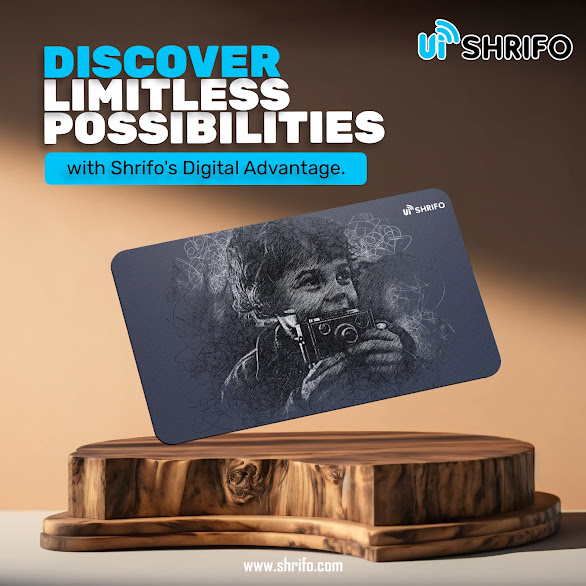The Rise of Digital Business Cards: Why Traditional Cards Are Being Replaced.
Introduction:
In today's fast-paced digital world, the way we exchange information and make professional connections has undergone a remarkable transformation. Gone are the days of relying solely on traditional paper business card to share our contact details. Instead, a new contender has emerged - the digital business card. In this blog post, we will explore the rise of digital business card and delve into the reasons why they are rapidly replacing their traditional counterparts. So, if you're a business card professional looking to stay ahead of the curve, or simply interested in the evolving landscape of networking, read on.
The Limitations of Traditional Business Cards:
Traditional business card have long been a staple in the world of professional networking. These small pieces of cardstock with printed information have served as tangible reminders of encounters, helping us recall people we've met and the connections we've made. However, despite their familiarity, traditional business card come with several limitations.
Firstly, they are easily lost or misplaced. How often have we found ourselves rummaging through drawers or pockets, desperately searching for a business card received weeks or months ago? In today's dynamic business environment, such delays can prove costly, hindering potential collaborations or missed opportunities.
Secondly, traditional business card lack interactivity. They provide static information, leaving no room for multimedia or dynamic content. As the business landscape becomes increasingly digital, professionals need more than just a name and phone number. They seek engaging ways to showcase their work, highlight achievements, and provide links to portfolios or social media profiles.
Enter the Digital Business Card:
The digital card for business has emerged as a revolutionary alternative to traditional cards. By harnessing the power of technology, business card offer a range of advantages that make them an attractive option for professionals across industries.
- Always Accessible: One of the most significant advantages of digital business card is their accessibility. With a digital card, professionals no longer need to worry about running out of cards or forgetting them at crucial events. Digital business card can be stored and accessed on smartphones, making them readily available whenever and wherever they are needed.
- Enhanced Interactivity: Unlike their paper counterparts, business card allow for enhanced interactivity. Professionals can include clickable links to websites, portfolios, or social media profiles, enabling recipients to delve deeper into their work and explore their online presence. Additionally, digital cards can incorporate multimedia elements such as videos or image galleries, providing a more engaging and immersive experience.
- Easy Updates: Another key advantage of digital business card is their flexibility. Making changes to traditional cards can be time-consuming and expensive, requiring a reprinting of the entire batch. In contrast, digital cards can be easily updated with a few clicks, ensuring that the most current information is always shared. Whether it's a new phone number, an updated job title, or a recent project, digital cards make staying up-to-date effortless.
- Sustainability and Cost-Effectiveness: As the world becomes increasingly conscious of sustainability, digital business card offer an eco-friendly alternative. By eliminating the need for paper and ink, digital cards contribute to reducing waste and carbon footprint. In addition, in the long run, they are cost-effective. While traditional business cards incur ongoing expenses for design, printing, and replenishment, digital cards require only an initial investment or a small subscription fee for dedicated platforms.
- Analytics and Insights: Digital business card provide a treasure trove of data and analytics that can help professionals track the effectiveness of their networking efforts. Platforms and apps offering digital cards often provide insights into how many times the card has been viewed, clicked, or shared, enabling professionals to gauge their impact and refine their networking strategies accordingly.
Conclusion:
As technology continues to shape the way we communicate and connect, the rise of business card is inevitable. The limitations of traditional cards have paved the way for a more dynamic, accessible, and interactive approach to networking. With features such as enhanced interactivity, easy updates, sustainability, and valuable analytics, business card are revolutionizing the way professionals showcase themselves and make lasting impressions.
For business card professionals and anyone looking to leave a memorable mark in the digital age, embracing the digital card for business is a step towards staying relevant and maximizing networking potential. So, why limit yourself to the confines of a paper card when you can unlock a world of possibilities with a digital business card? Embrace the change, adapt to the evolving landscape, and take your networking game to new heights!




Thanks for sharing! Leapon Card: The Best Digital Business Card. Instantly share customized profiles via tap or QR code for smarter networking. Visit us to know more.
ReplyDelete